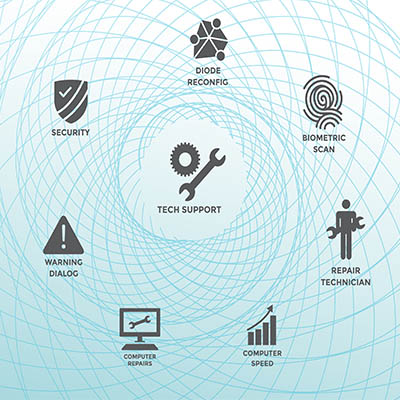The fact is that phishing messages are all over the place. It doesn’t matter if you are a large corporation or a small business with only a dozen employees; the threat of phishing attacks is real and should be prepared for. Thankfully, one of the easiest ways to avoid phishing messages is as easy as moving your mouse. We are, of course, talking about hovering over links.
Let’s explore how you can hover over links with your mouse pointer to determine the legitimacy of suspicious links you might receive in your email or while browsing the Internet.
Why Hovering Over Links is Important
If you hover over a link using your mouse, you will see the link address appear in your web browser. The location will vary, but for Google Chrome, it should appear at the bottom-left side of the window. There are a couple of reasons why you might want to hover over a link before you commit to clicking on it.
Guarantee the Authenticity of the Link
One of the biggest reasons to hover over links is to ensure they go to the web location they claim they go to. Hackers will often disguise links to fool users into clicking on them. They might appear to go to one location, but in reality, they are redirected to another entirely.
Of course, a website might link out to external resources or pages for context. We do it all the time on our blog, for example. However, the difference is that hackers will use links to mask their true intentions. It’s much harder to hide the intentions of an email attachment, for example, than hiding the intentions of a string of characters in the form of a link.
Protect from Potential Threats
Similarly to our previous point, hovering over a link will help you identify potentially malicious links. For example, let’s say you’re browsing a website that gives you no immediate reason to suspect that it’s a malicious website. There might be links to free downloads or resources that, in your excitement, you might not think twice about clicking on. The last thing you want is for hackers to use the promise of something great to lure you into a trap.
Hovering over a link might not necessarily indicate that the link is malicious, but if it goes to a random link that is totally different from the one that you are currently navigating, then perhaps you should think twice before clicking on it.
Use a Web Content Filter and Spam Solution
If you’re unsure if you can trust your judgment on clicking links, then you can opt to have your technology do some of the heavy lifting with web content filters and spam blockers. These solutions can block your access to potentially dangerous website content, warning you if it suspects that you are about to enter dangerous territory. Spam blockers can prevent messages from ever hitting your inbox in the first place, too, which saves you time and productivity while improving security.
To get started with these solutions, give North Central Technologies a call at 978-798-6805.







